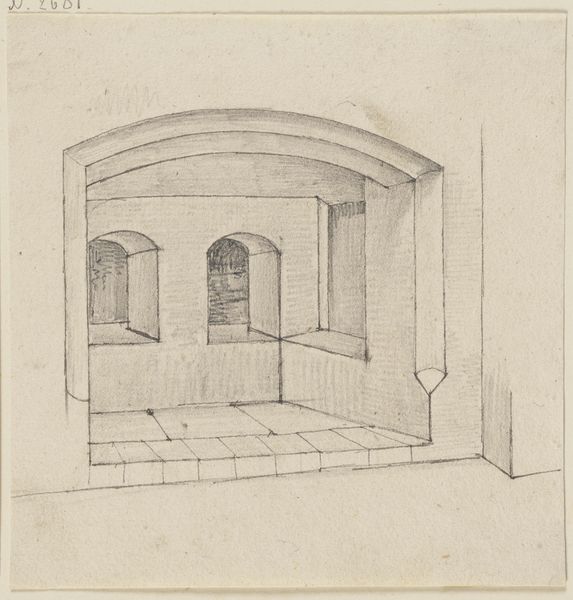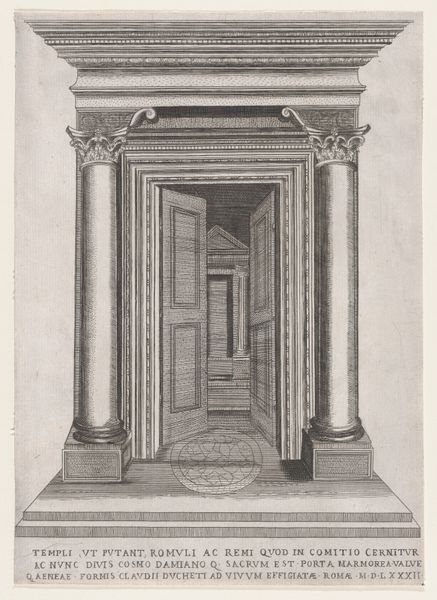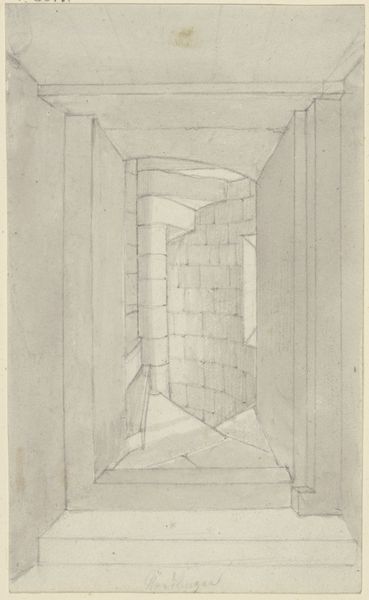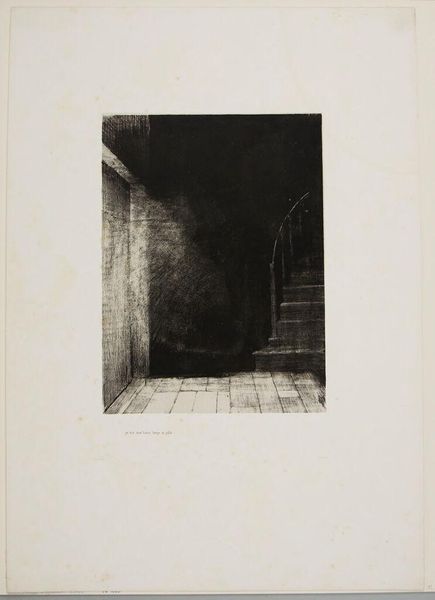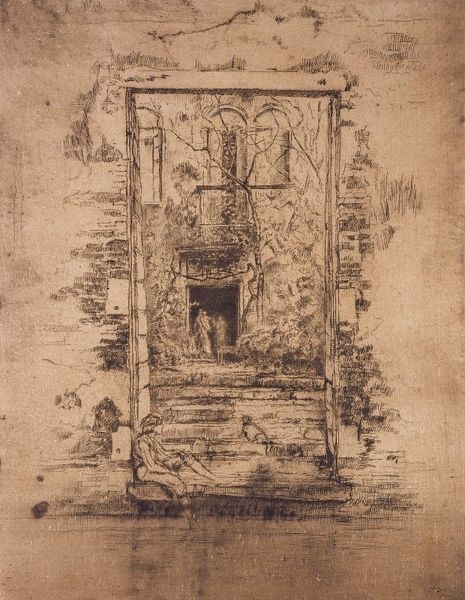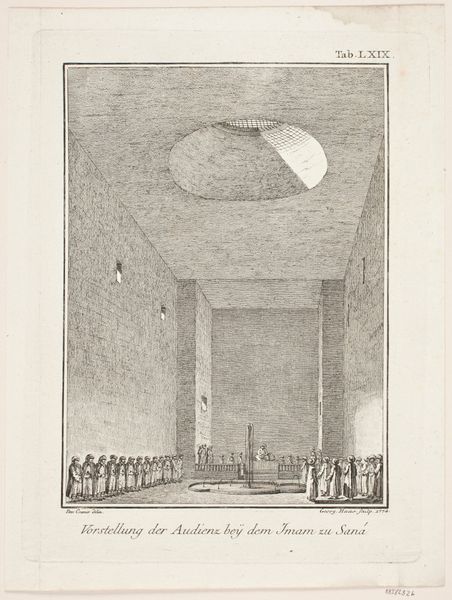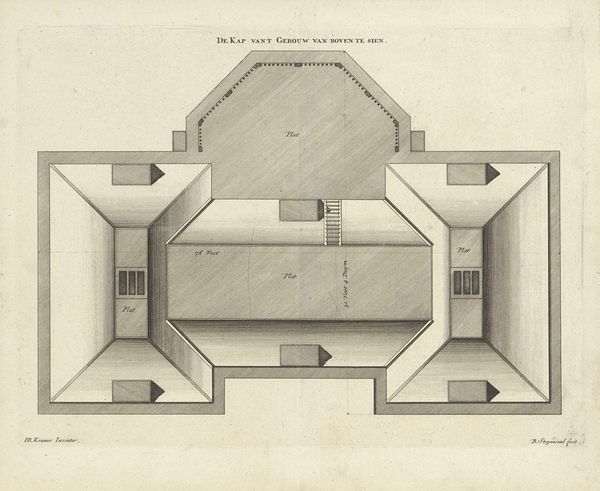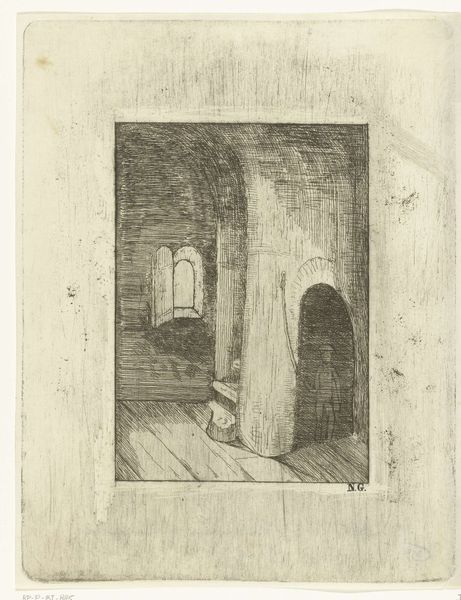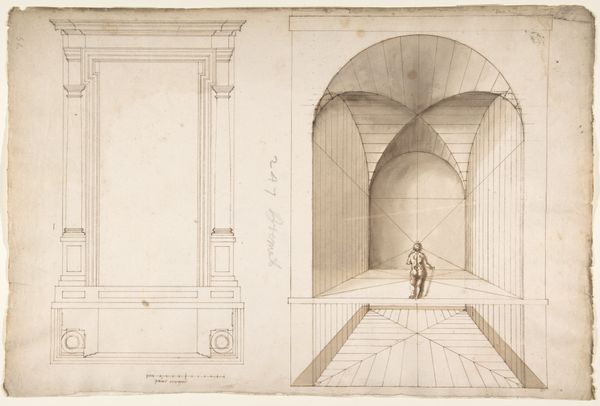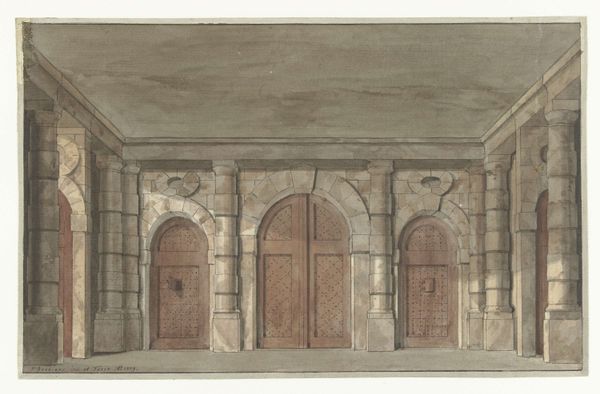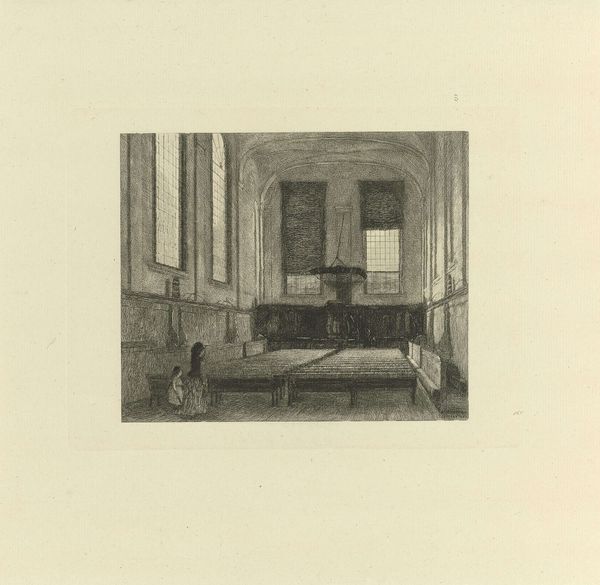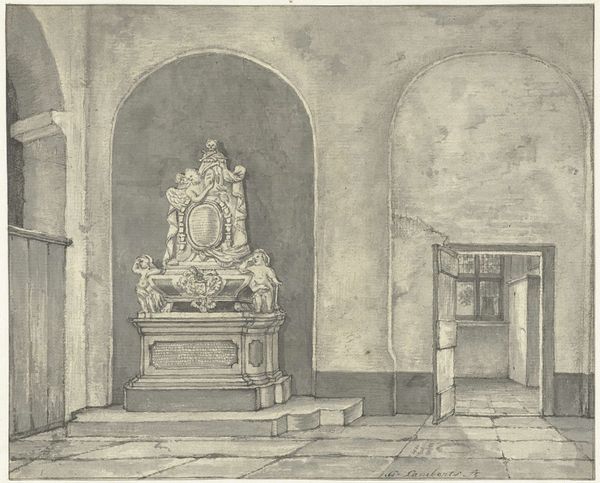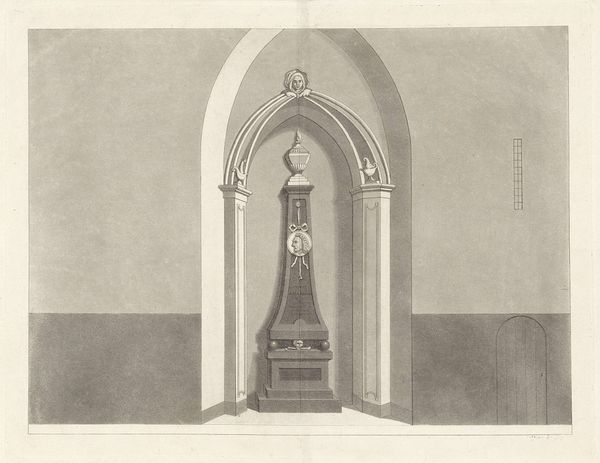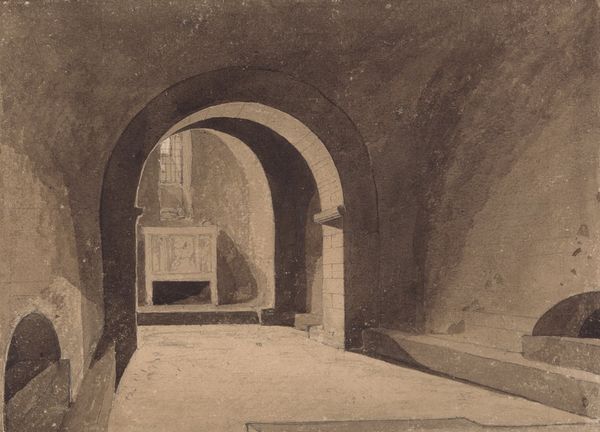
A Vision: The Inspiration of the Poet (Elisha in the Chamber on the Wall) c. 1819 - 1820
0:00
0:00
Dimensions: image: 244 x 211 mm frame: 530 x 455 x 30 mm
Copyright: CC-BY-NC-ND 4.0 DEED, Photo: Tate
Editor: Here we have William Blake’s "A Vision: The Inspiration of the Poet (Elisha in the Chamber on the Wall)." It's a watercolor and ink drawing. I’m struck by how the receding space seems to isolate the figures. What can you tell me about its context? Curator: Blake was deeply critical of the institutional structures of his time, including the Royal Academy. Do you see how this chamber resembles a stage, almost theatrical? Blake used such imagery to question authority and envision alternative spiritual realities. How does this setting affect your interpretation of the "vision"? Editor: It makes it seem very constructed, a deliberate staging of inspiration rather than a spontaneous event. I hadn't thought of it that way. Curator: Precisely! And how does that inform Blake’s view on the role of the artist in society? Editor: It suggests the artist has agency, actively shaping the vision instead of passively receiving it. Thank you, I’ll definitely consider that.
Comments
tate 2 months ago
⋮
http://www.tate.org.uk/art/artworks/blake-a-vision-the-inspiration-of-the-poet-elisha-in-the-chamber-on-the-wall-t05716
Join the conversation
Join millions of artists and users on Artera today and experience the ultimate creative platform.
tate 2 months ago
⋮
Blake called himself a visionary, claiming he actually perceived things that are not of this world. This is the extreme end of the imagination and not far removed from the Surrealists’ fascination with dreams which, according to Freud, offered access to the unconscious. The title of this work was suggested by a Blake expert named W Graham Robertson:'A Vision'. Probably representing the Poet, in the innermost shrine of the imagination, writing from angelic diction. This reflects Blake’s belief that his work was dictated by angels. Gallery label, August 2004
